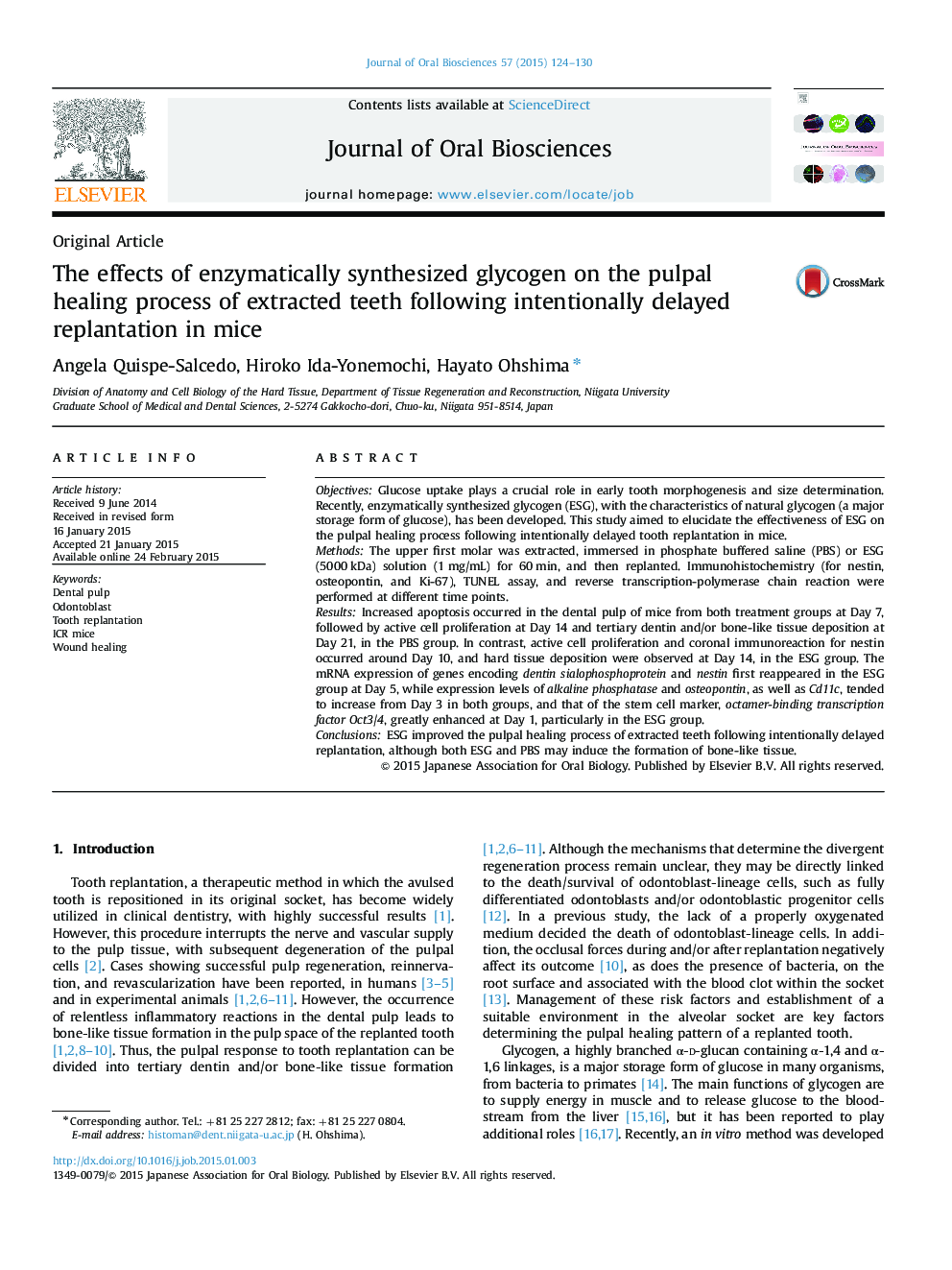| Article ID | Journal | Published Year | Pages | File Type |
|---|---|---|---|---|
| 2776806 | Journal of Oral Biosciences | 2015 | 7 Pages |
ObjectivesGlucose uptake plays a crucial role in early tooth morphogenesis and size determination. Recently, enzymatically synthesized glycogen (ESG), with the characteristics of natural glycogen (a major storage form of glucose), has been developed. This study aimed to elucidate the effectiveness of ESG on the pulpal healing process following intentionally delayed tooth replantation in mice.MethodsThe upper first molar was extracted, immersed in phosphate buffered saline (PBS) or ESG (5000 kDa) solution (1 mg/mL) for 60 min, and then replanted. Immunohistochemistry (for nestin, osteopontin, and Ki-67), TUNEL assay, and reverse transcription-polymerase chain reaction were performed at different time points.ResultsIncreased apoptosis occurred in the dental pulp of mice from both treatment groups at Day 7, followed by active cell proliferation at Day 14 and tertiary dentin and/or bone-like tissue deposition at Day 21, in the PBS group. In contrast, active cell proliferation and coronal immunoreaction for nestin occurred around Day 10, and hard tissue deposition were observed at Day 14, in the ESG group. The mRNA expression of genes encoding dentin sialophosphoprotein and nestin first reappeared in the ESG group at Day 5, while expression levels of alkaline phosphatase and osteopontin, as well as Cd11c, tended to increase from Day 3 in both groups, and that of the stem cell marker, octamer-binding transcription factor Oct3/4, greatly enhanced at Day 1, particularly in the ESG group.ConclusionsESG improved the pulpal healing process of extracted teeth following intentionally delayed replantation, although both ESG and PBS may induce the formation of bone-like tissue.
